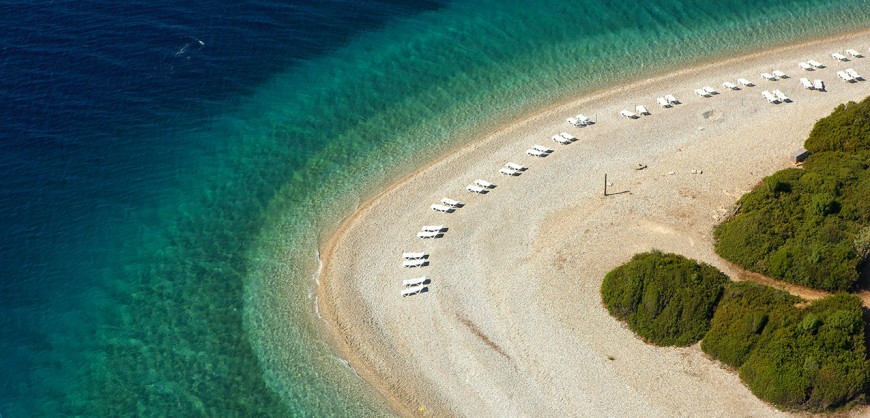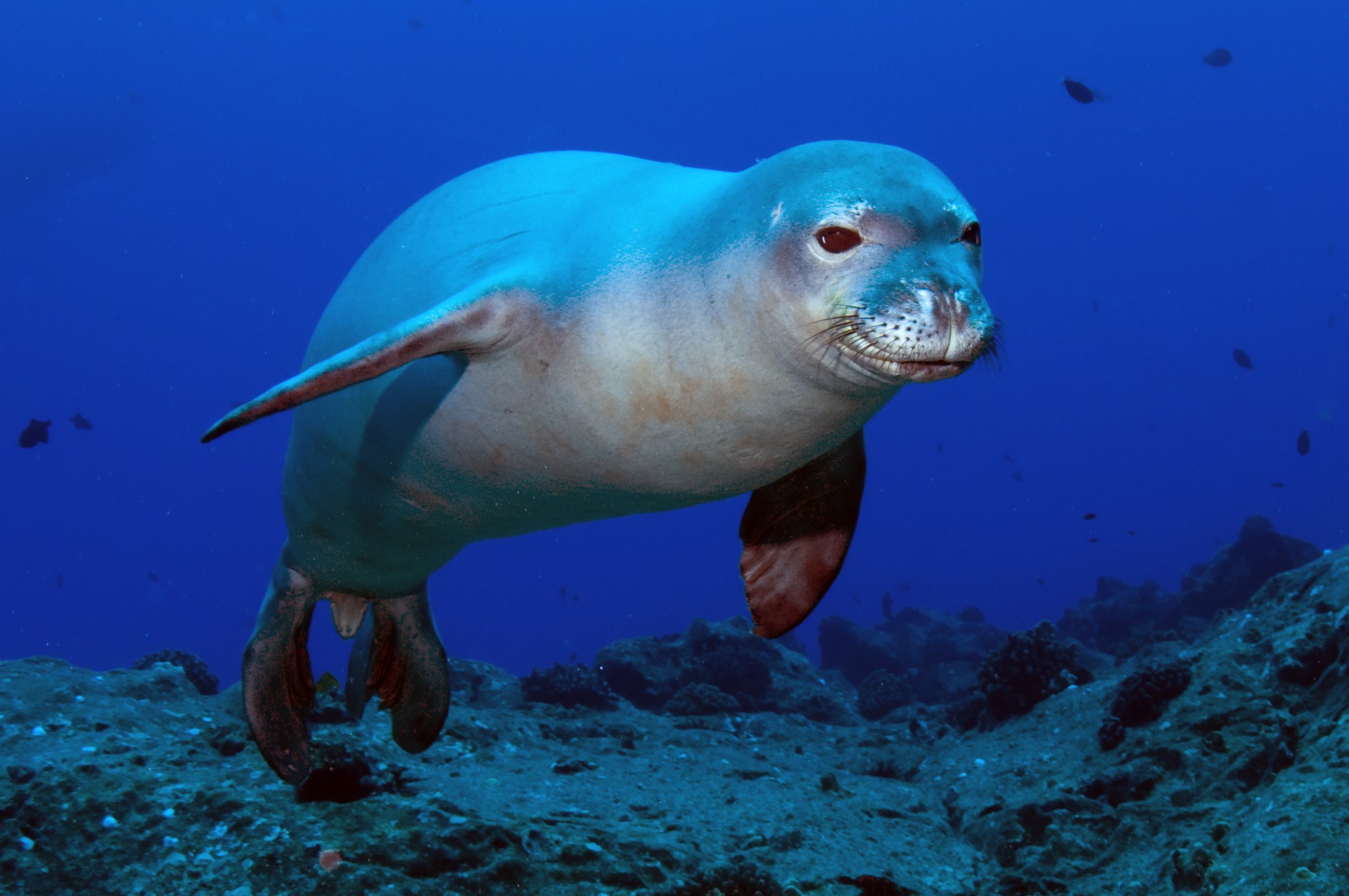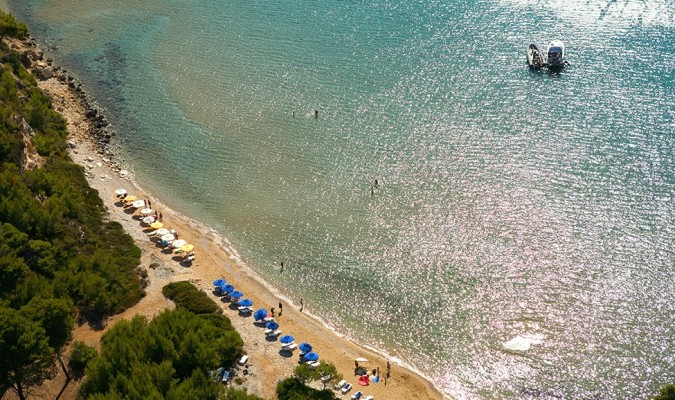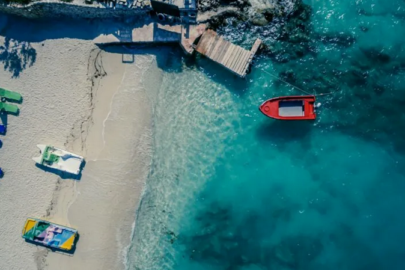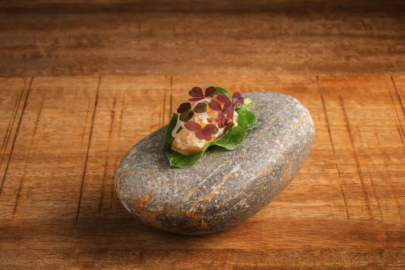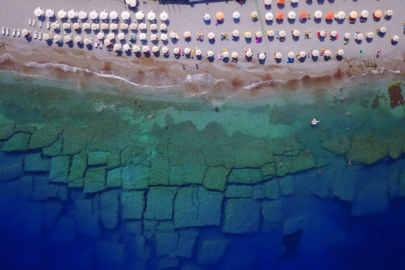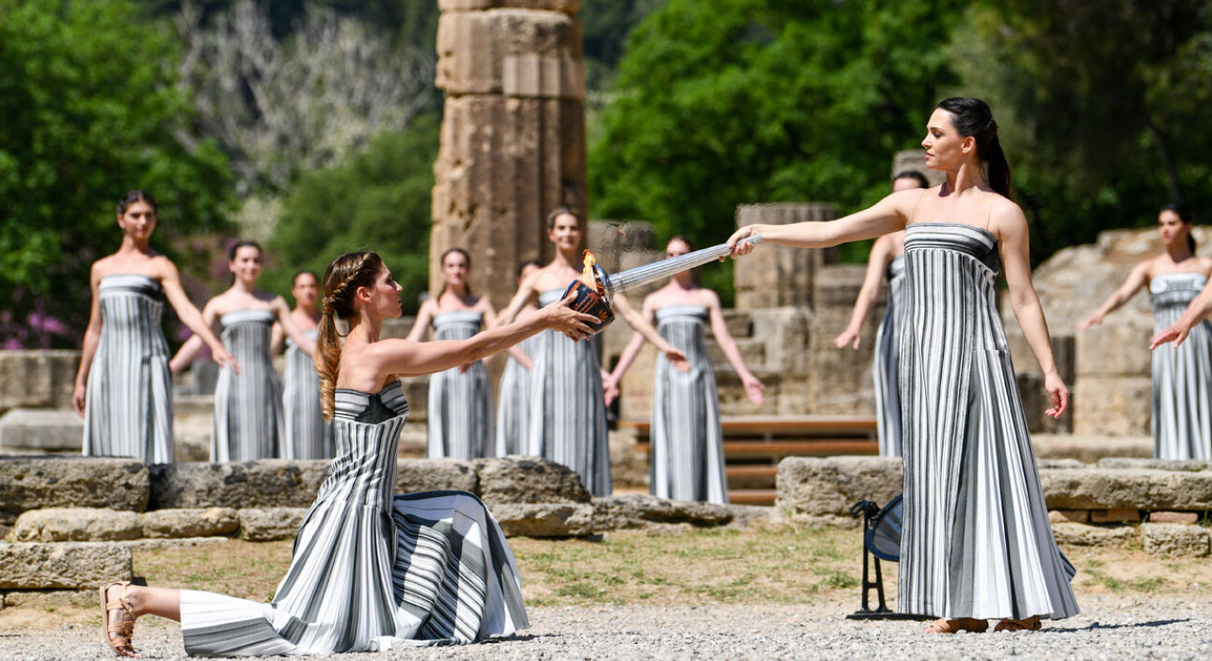Blessed with rugged natural landscapes, and surrounded by small islands scattered around the archipelago, Alónissos is an island ideal for those you want to unwind and enjoy leisure walks surrounded by pine forests, olive groves and orchards. The island is the most remote of the Northern Sporades island group, and plays host to the National Marine Park of Northern Sporades, a refuge for rare seabirds, dolphins and the Mediterranean monk seal, monachus monachus.
“Íkos”, as was named the island in antiquity, was first inhabited by Stafylos (meaning grape), the son of Dionysus and Ariadne. This myth explains the island’s strong bonds with viticulture from ancient times until today. Urns bearing the stamp “IKION” were exported all around the ancient world confirming the island’s great fame as excellent wine-producing region. According to the myth, Pileas, the father of Achilles, was buried on Alónissos. This is the reason why the island’s second name is “Achilliodromia”. Different versions of this name have survived throughout the years: “Hiliodromia”, “Liadromia”, “Diadromia”.
Aghios Dimitrios Beach
Alónissos was one of the first Islands of the Aegean to be inhabited, as indicated by Neolithic settlement remnants found at the Cape of Kokkinókastro (meaning “Red Castle”). On Yioúra Island human presence was first detected in the 9th century BC, according to findings at Cyclop’s cave.
Kokkinokastro beach
Situated at the crossroads of major sea routes, it was from here that Argo, the ship on which Jason and the Argonauts sailed to Kolhida to retrieve the Golden Fleece and the ships of Achaeans sailed to Troy. Numerous shipwrecks of classic and Byzantine times lying on the sea bottom confirm the naval power of the island through the years. Travellers, like Buodelmondio back in 1420, had noted that the inhabitants were so experienced sailors that they used to guide their ships with the help of various signs.
Upon reaching the island you will encounter Patitíri, the picturesque harbour and capital of the island with the beautiful stone paved waterfront that took its name from the wine presses used by the locals, who were mainly occupied with wine making. Hóra (or Old Village) is the old capital of the island. A medieval castle offering sweeping views to the sea, stone houses with picture-perfect courtyards, narrow paved streets, threshing floors and a number of churches encapsulates the essence of a typical Greek island settlement. A path from Hóra leads to the church of Áyioi Anárgyroi, where you can enjoy a lovely walk in the dense pine forest.
At Miliá, in a green idyllic location, you will find the International Academy of Homeopathy, which still keeps alive the deep-rooted tradition of folk medicine that cherished thanks to the miraculous herbs growing on the island. Sea lovers will also find on Alónissos beautiful beaches with crystal-clear waters (Meyálos Mourtiás, Stení Vála, Miliá, Chrisí Miliá, Marpoúnta) will offer you unforgettable moments of peace and serenity.
Chrisi Milia
Spend a day on a boat trip to explore the uninhabited islet around the National Park speckling the Aegean to the east:
• Yioúra has a neolithically inhabited stalactite cave that sheltered Homer’s Cyclops; a rare species of wild goat breeds there. According to findings it’s being inhabited since Mesolithic Era (9th-7th century BC).
• Kyrá-Panayiá (or Pelayoníssi) belongs to Meyistis Lavras Monastery on Mount Athos. It used to be the site of ancient Alónissos. Here there is also a 12th century monastery, one of the biggest natural harbours of the Mediterranean Sea, Planitis bay, a well-preserved flour mill and a restored olive/wine press.
• Pipéri forms the core zone of the National Park where the Mediterranean seals and the seabirds nestle. Access by boat is prohibited.
• Ksiró (or Peristéra) with pristine sandy beaches.
• Skátzoura with the impressive Evaggelistria Monastery.
• Psathoúra, a volcanic island dominated by its lighthouse, the tallest in the Aegean, constructed by Frenchmen in the 19th century and the ruins of an ancient city on its sea bottom.
Getting there
• From Athens or any major Greek city you can travel by bus or car to Vólos, which is daily connected to Alónissos by ferry or hydrofoil.
• The low cost airline Ryanair has established new routes to Vólos from Brussels Charleroi, Frankfurt Hahn, Rome and Bergamo.
• From Alónissos you can also travel by ferry or hydrofoil to the islands of Skiáthos and Skópelos.

